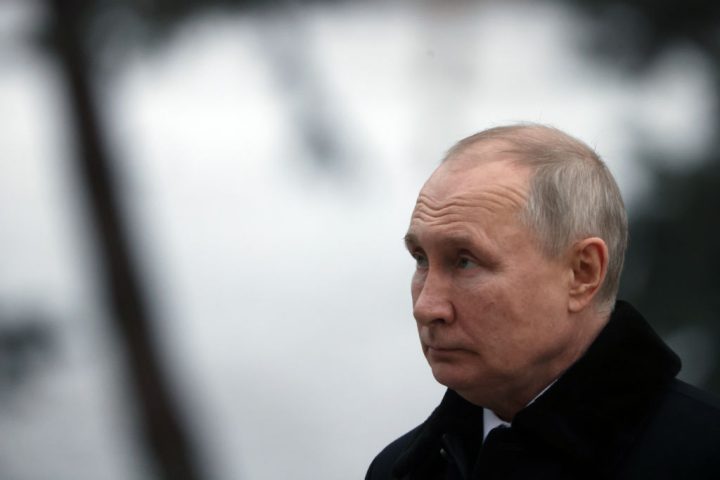Putin’s war has finally made its way to the Russian home front. A leak from the Kremlin reveals that Russia’s regional governments are being ordered to conduct surveys of and update bomb shelters across the country. Speaking to the independent newspaper the Moscow Times, one Kremlin source said this audit had been going on since at least last spring.
Renovating Russia’s bomb shelters is, however, easier said than done. A relic of the Soviet Union, the country’s shelters were decommissioned in the 1990s, with many being leased or sold to the private sector and many more falling into disrepair.
This tangible ‘evidence’ primes Russians to believe the threat of an attack is higher
Now, local authorities are being asked to spend millions of roubles refurbishing them: updating ventilation systems, waterproofing and making sure they are stocked with supplies. In Krasnodar, south Russia, for example, the local newspaper reported that the city authorities plan to spend the equivalent of nearly £210,000 doing up 50 shelters this year.
Russia’s population has grown since the end of the Cold War, and in the event of an emergency, there would not be enough bomb shelters to accommodate everyone. Some cities are considering using metro networks as make-shift refuges to make up the difference or are desperately trying to buy back any shelters sold off in the last thirty years; others are exploring more inventive solutions. According to the independent Russian news website 7×7, authorities in the north-eastern city of Ivanovo have proposed that the basements of flats be converted into shelters, with the cost coming out of rent paid by residents to their building management.
But with the conflict in Ukraine more or less confined to Ukraine’s borders, why is this happening in Russia now? Is the Kremlin truly concerned that Ukraine could bomb Russia?
Back in January, Muscovites going about their daily business began to report the appearance of large machinery on the city’s rooftops. With the help of Russian military bloggers, these monstrous new additions to Moscow’s skyline were quickly identified. They were Pantsir-S1 surface-to-air and S-400 anti-aircraft systems designed to shoot down any missiles aimed at the city; at least five were spotted.
One popped up a stone’s throw from the Kremlin on the roof of the Ministry of Defence; another had been installed in the south-east of the city near the Taganskaya Metro station. According to locals, air defence systems have also been installed near at least two of Putin’s residences: one in the Moscow suburbs, the other in the Novgorod region.
Superficially, there is a straightforward answer to this surge of activity: in October, Putin issued a presidential decree which ordered some Russian regions closest to the Ukrainian border to prepare bomb shelters. There was sound logic behind this preparation: since December, several drone strikes attributed to Ukraine have occurred in the West of Russia, targeting air bases and resulting in military casualties.
In October’s presidential decree, however, the rest of Russia was simply told to prepare a ‘level of basic readiness’ to protect the population from ‘natural and man-made emergencies’. The decree’s vagueness, with few proscriptions as to what measures individual local authorities were required to undertake, suggests that herd mentality might at least partially be behind the nationwide drive: even regions hundreds of miles from the front line, including reportedly those in Russia’s Far East, are updating their shelters too.
The Kremlin and its propagandists have suggested for some months that, with Nato backing, Ukraine could develop capabilities to strike further into Russian territory. It is difficult to say whether Russia genuinely fears an escalation of the war, or if air defences and bomb shelters are an attempt to manipulate its population through fear mongering. When questioned last month by reporters on the air-defence systems in Moscow, Kremlin spokesperson Dmitry Peskov refused to confirm whether an attack on the city was expected. Yet the following day the Russian Ministry of Defence confirmed it had carried out air defence training just outside the city.
But whether or not the Kremlin actually believes what it says, there is another benefit to the paranoia it is projecting on its population. Even if the real risk of drone attacks on Moscow or elsewhere remains low, installing anti-missile defences and refurbishing bomb shelters across the country helps to hammer home the Kremlin’s lies that it is Russia that is under attack. Presenting tangible ‘evidence’ of this type increases the likelihood of a bunker mentality in the population, priming Russians to believe the threat is higher and making them less resistant to Putin’s sabre-rattling rhetoric.
With the expected Russian spring offensive likely to mean high casualty rates and further domestic chaos when it begins, Putin will want any means possible to keep the Russian population in check. Cynical ploy or genuine fear, Russia’s new domestic defences will go some way to helping him achieve this.







Comments